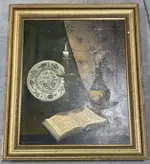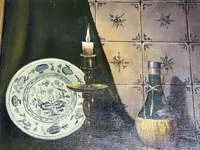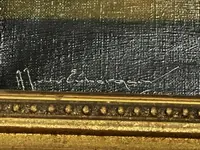Cariboo5
Hero Member
- Joined
- Oct 27, 2011
- Messages
- 812
- Reaction score
- 1,432
- Golden Thread
- 0
- Primary Interest:
- All Treasure Hunting
Trying to get a time frame on the design of the plate in this painting, although it may not reflect on the date this was painted would be nice to know.
I have not been able to find that design so far in researching.......... Thanks to all .........
I have not been able to find that design so far in researching.......... Thanks to all .........







